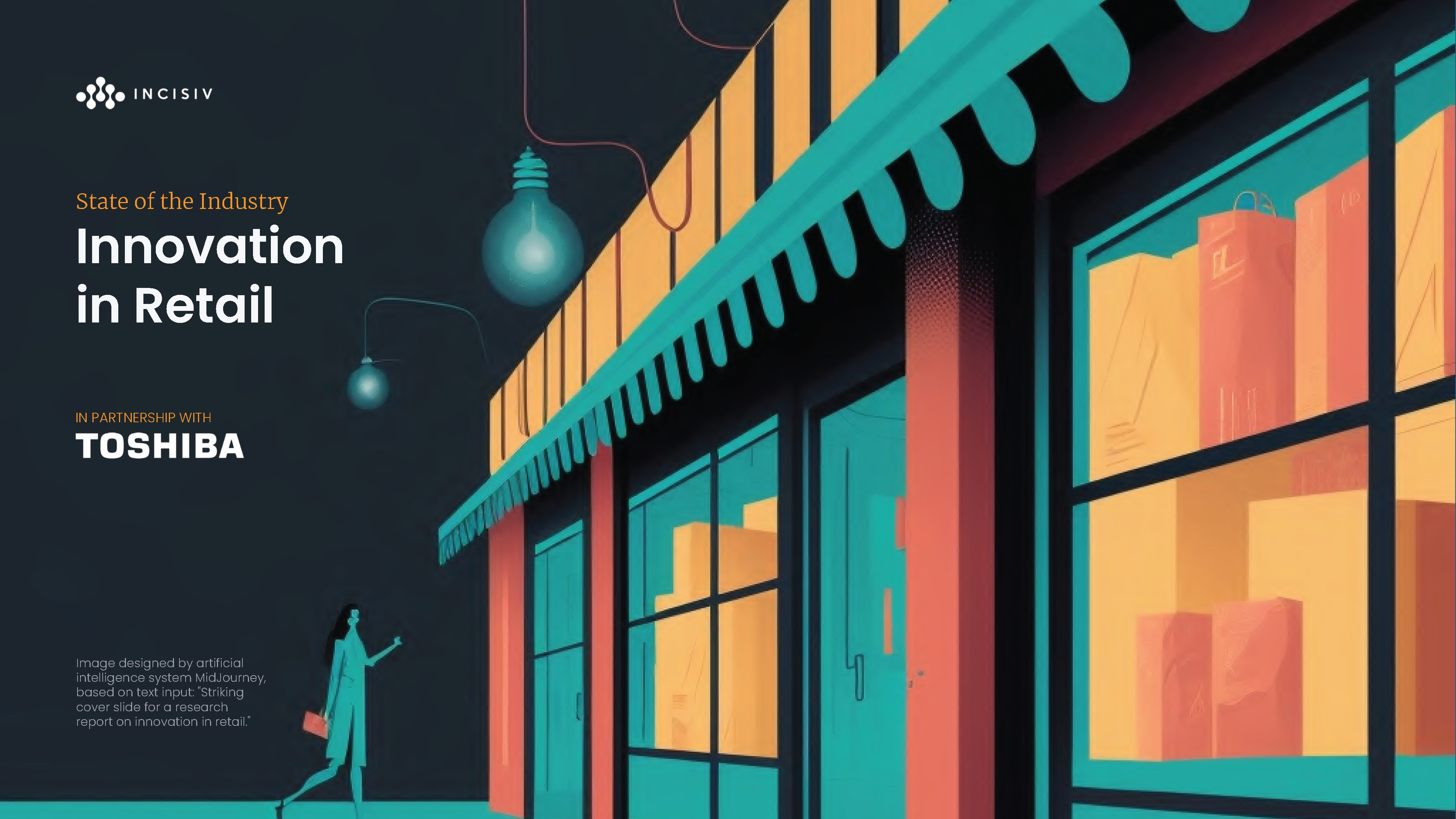This blog discusses the challenges retailers face in innovating and identifies four key areas where they can focus their efforts to gain a competitive edge.

According to a recent report by Reuters, retail sales in the US increased by the most in nearly two years in January 2023. However, a robust gain in sales cannot hide the fact that the sector is working under extremely challenging conditions with price pressure from discount stores, supply chain volatility, and increasingly demanding and fickle customers. Today, having a unique selection of products or strategic pricing and promotion is no longer sufficient to capture the consumer’s attention. To keep pace with the competition, retailers need an innovation agenda that enhances the value they offer to customers by providing creative products and services. Simultaneously, they must also use technology to improve operations and customer service.
However, based on Incisiv's 2023 State of the Industry: Innovation in Retail Report, there is a gaping gulf between retailers’ intent and their ability to innovate. While 92% of senior executives in retail understand that innovation is critical to their future growth strategy, only 29% have a mature execution process to implement the same. Most are unable to prioritize experimentation, are averse to taking financial risks associated with innovation, or are unable to achieve high-quality execution of their strategies. Less than a quarter encourage or reward risk-taking and experimentation and only 27% have a dedicated team focused on driving innovation. As a result, these retailers may struggle to meet the changing consumer demand and remain competitive in a rapidly evolving market.
Leaders in innovation outperform their peers across key business metrics: visionaries and leaders have a 3-year revenue CAGR of 6.2% whereas followers and laggards are at 0.7%. Based on the report, here are the four key areas in which retailers must innovate to stay ahead of the competition.
Inventory Visibility
The traditional idea of inventory visibility was limited to having real-time access to how much inventory is available at all times, across all channels and locations. Accurate inventory is not only necessary to ensure that customers find and buy the products that they want, but it can also provide valuable insights for enhancing the customer experience. Most executives clearly understand the importance of real-time visibility but only 8% have mature dynamic inventory information and 13% have shelf-level inventory visibility.
Maintaining visibility across the supply chain will limit incidents of stockouts or overstocks which not only controls costs but also reduces customers’ complaints. Accurate inventory can also provide insights into which products are the biggest sellers and ensure an improved ability to meet demand. Further, tracking inbound and outbound stocks can lead to better forecasting and improved distribution. At a global level, anticipating shifts in consumer demands can increase market responsiveness and the ability to adapt to unforeseen disruptions.
Inventory visibility is a foundational capability that will enable retailers to detect and predict operational anomalies, ultimately leading to increased automation of supply chain operations and a more efficient retail experience for shoppers.
Personalizing Customer Journeys and Promotion
Personalization provides each customer with a unique journey across every single touch point and channel of the retailer, based on their history and intent. The ultimate goal is to connect with the consumer, improve their shopping experience and increase their brand loyalty. The report states that while 78% consider personalized promotions important only 25% are exploring them.
Retailers need to individualize their strategy and provide relevant recommendations based on a combination of global trends, contextual cues, and personal affinities. At Sephora stores, for example, associates can access customer purchase history and preferences, as well as real-time inventory information to make personalized product recommendations. Retailers must create unique shopper profiles that can be used across channels. This requires brands to invest in AI and automation and create an accurate database that is unique to the business and its customers. Brands must also balance using data to improve personalization with compliance with privacy regulations.
Experience Unification
Customers today want a consistent brand voice across channels from a business. A unified customer experience (CX) enhances brand awareness and strengthens brand loyalty and sales. A unified platform to manage customer experience will give retailers a 3600 view of the customer’s preferences and history. It will allow the business to proactively engage with the customer and allow them to seamlessly move from one channel to another.
As per the report, while 45% of retailers consider unifying physical and digital journeys “very important”, only 11% are at a mature level when it comes to the integration of various data sources, systems, and channels. Unifying physical and digital journeys can be a challenge for retailers due to the complexity of integration. Further, it is no longer limited to providing a similar experience in the “offline” and “online” modes because consumers today are exposed to businesses on platforms such as Instagram and TikTok that are not controlled by the business itself.
Retailers need to use the right technology and data to bridge the gap between the digital and the physical. When done right, this unification can create magic, however, even the slightest friction will easily break the spell.
Technology Innovation
Technology innovation in retail can revolutionize how businesses interact with shoppers and manage their operations. But as per the report, even innovation leaders lack key technology innovation capabilities. Surprisingly, only 16% are able to utilize the best of innovation wherever it exists in the enterprise (e.g. use eCommerce personalization in the store).
It is important to note that the three categories of innovation mentioned above can be possible only through the adoption of emerging technology such as AI, IoT, robotics, and AR/VR. These technologies can bridge the gap between online platforms and brick-and-mortar stores, enhance comfort for both the retailer and the customer, establish real-time communication and insights, provide predictive analysis, save costs, and boost productivity.
Technology is at the very heart of the future of retail and as it pushes the boundaries of what is possible, it will not just enrich consumers’ experience but also improve business performance.
Final Thoughts
Retailers looking to innovate must remember that there is no single ‘winning recipe’. They must start small, test, learn and repeat. With each iteration, as feedback is funneled back, the impact will multiply. It will make the business more responsive and efficient by enabling the ability to make data-driven decisions. As technology continues to evolve, retailers must embrace innovations and continuously experiment to find new ways to better serve customers and remain competitive.






